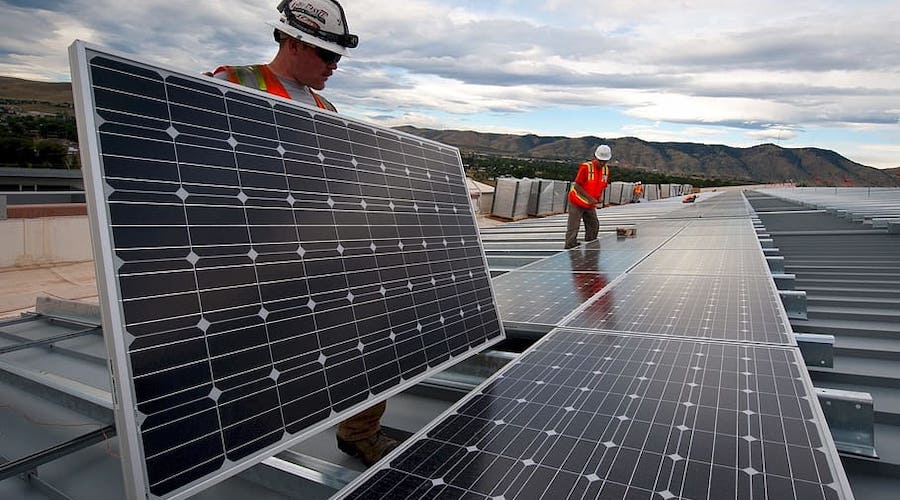Building the market for sustainable metals

The first generation of metals produced with little or no carbon emissions is headed to market. And in 10 to 15 years, green metals are likely to be the norm.
But producers face an immediate challenge: limited demand. Sustainable alternatives to steel, aluminum, and other metals are expensive to produce and priced at a premium. The future market will be vast, yet it’s unclear how quickly it will develop and which customers will be early adopters. That’s a common problem with many new technologies.
Leading producers are generating initial sales by partnering with manufacturers that have a strong incentive to incorporate green raw materials into their products. They are also adapting their commercial strategies to help stimulate near-term demand. By moving along the experience curve faster than the competition, first movers will push costs down, leverage subsidies more effectively, and gain a competitive edge before green metals become mass-market products in the 2030s.
Given the size of traditional commodity markets, sustainable metals are likely to reach impressive scale quickly. For example, we expect between 15% and 25% of European steel production to be low carbon by 2030, or about 25 million to 35 million metric tons. Based on estimated prices, that volume represents a $20 billion to $30 billion market (see Figure 1).

Commodity producers have started making large investments in sustainable metal technologies and production facilities. Many of these will reach commercial maturity in three to five years. For example, H2 Green Steel is building a greenfield plant in northern Sweden to produce steel with a hydrogen-based process powered by renewable energies. The process will reduce carbon emissions from the outset by 90% compared to traditional steel-making methods, with the aim of reducing emissions to zero. The company, which has secured €3.5 billion in debt funding for the investment, aims to start commercial production in 2025 and reach an output of 5 million tons of green steel in 2030.
German steel producer Salzgitter is investing more than $1 billion to start converting an existing steel plant to run on green hydrogen. The company plans to introduce the new technology to its steel plants in stages, with a goal of cutting 95% of emissions from its steel production by 2033. Similarly, Alcoa and Rio Tinto are codeveloping a technology to produce virgin aluminum with no direct carbon emissions. Their joint venture to commercialize the new process, Elysis, aims to begin installations around 2024.
Turning point 2030
Manufacturers that stand to benefit most from decarbonizing their operations will fuel the initial demand for low-carbon raw materials. As demand for sustainable metals grows, supply shortages may increase the premium that producers can charge for them.
The future winners will continually adapt their commercial strategies and models to the evolving market for green commodities. Our analysis suggests a turning point is likely sometime after 2030 when sustainable metals and chemicals become more widely available. Ultimately, premiums will disappear as these new goods become commodities.
A few key guidelines can help leadership teams position themselves for success as demand for green commodities grows.
Early adopters
Commodities typically make up a large proportion of a manufacturer’s carbon footprint. Determine the role of low-carbon materials in each customer’s overall carbon transition to help identify potential sources of demand. For example, steel production accounts for more than 6% of greenhouse gas emissions (see Figure 2). Companies that use a substantial amount of steel in their products are likely to be receptive to a low-carbon alternative to reduce emissions.

Producers that understand the customer’s value chain and decarbonization goals are better able to identify potential early adopters and make a strong case for switching to green commodities.
In addition to reducing emissions, manufacturers may also benefit from green commodities in boosting their sustainability credentials with consumers. Those likely to benefit most from switching to green metals and chemicals will have a high internal cost of carbon, substantial emissions, ambitious decarbonization targets, and a strong commitment to the company’s environmental image. Wind energy giant Vestas, for example, has committed to a 45% reduction in Scope 3 emissions by 2030. Half of the company’s carbon emissions come from the steel used to make its wind turbines.
New sales capabilities
Winning in green commodities requires a different approach to sales, marketing, and communication. Forward-looking producers ensure commercial and production teams work together on pricing and capacity decisions. They also build new capabilities and sales resources to target frontrunners.
Leaders in the transition to green commodities have begun to train sales teams, educate customers on the value of decarbonization, form direct relationships with customers, and establish partnerships. Take the case of H2 Green Steel: At the time of its Series B funding round, the company had already presold 60% of its initial volumes, with some customers also taking equity in the firm. Securing sales prior to production helps assure demand before the market takes off.
Critical signposts
To stay one step ahead of a developing market, leaders identify signposts that will signal pivotal changes in demand and link actions to each one. Such signposts include impending regulations mandating the use of low-carbon inputs. For example, steel and aluminum producers should keep a close eye on the Scope 3 targets of their customers, including those in the automotive, construction, white goods, and machinery sectors. Rising Scope 3 targets will likely lead to higher demand for green commodities. Producers that anticipate these pivotal moments improve the speed and quality of decision making.
The shift to green metals is likely to accelerate in the coming years. Producers that understand the value proposition for sustainable commodities and adapt their go-to-market strategies will move faster down the experience curve. The winners in this future market will help fuel early demand and enjoy premiums while gaining an advantage as the market for green commodities matures.
{{ commodity.name }}
{{ post.title }}
{{ post.date }}
Comments